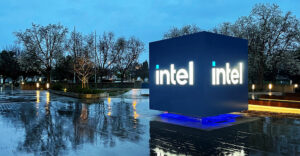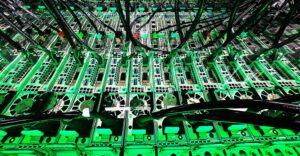
Using several new technologies and more than 1,000 dual-processor Power Mac G5 computers, Virginia Tech University is building a supercomputer cluster that is likely to rank among the fastest in the world.
In addition to the G5 machines, the university said it is using a beta version of the latest release of OS X, new networking hardware from Mellanox and Cisco, and cutting-edge configuration and cooling technologies to build the powerful cluster for a fraction of the price of a traditional supercomputer.
“The total price tag is probably a factor of 10 lower than a machine in this class in the past,” Virginia Tech College of Engineering dean Hassan Aref told TechNewsWorld. “Virginia Tech’s idea was to develop a supercomputer of national prominence based upon a homegrown cluster.”
Super New
Aref, who indicated the project is under pressure to submit computing speed numbers by October to be considered among the world’s fastest supercomputers, said the cluster represents the use of five new technologies.
In addition to the latest Mac operating system and dual 2-GHz Power Mac G5 machines, which Apple touts as the fastest desktop computers in the world, the cluster will use several technologies from other vendors: “brand new” networking hardware from Mellanox and Cisco; a new high-density rackmounted cooling system from Liebert; and new software that will enable the cluster to “run big jobs,” according to Aref.
The university said the cluster will use 1,100 dual-processor G5s. They will be clustered using 64-bit Infiniband semiconductor technology from Mellanox, which will provide the primary communications fabric, drivers, cards and switches. Cisco’s Gigabit Ethernet switches also will be used as the secondary communications fabric to interconnect the cluster.
Stability and Scheduling
Aref said the larger number of machines will mean greater access to and more projects for the supercomputing cluster, which will be used for research on nanoscale electronics, quantum chemistry, computational chemistry, aerodynamics and molecular modeling of proteins, among other work.
Aref also said the distributed terascale cluster will mark a new level of stability and discovery.
“We think running a cluster of this size in a sustained, stable mode for a long time is quite unique,” he said. “It will allow calculations that have been difficult on other clusters and allow us to peer into a new level of research.”
Grassroots Go Global
Virginia Tech said the supercomputer’s construction came about through weekly conference calls between the various players and included international expertise from Japan and Israel as well as input from university staff and students.
Aref said that despite concerns about U.S. slippage in the supercomputer environment, the Virginia Tech project highlights American expertise and technology.
“What we’re really working off of is this grassroots expertise,” he said.
Commodity Computing
The Virginia Tech project comes less than a month after Los Alamos National Laboratory announced deals for Linux supercomputing clusters. The latest announcement highlights the departure from monolithic mainframe supercomputing to less expensive, grid-like configurations, Yankee Group senior analyst Dana Gardner told TechNewsWorld.
“This is further evidence of going away from symmetrical multiprocessing mainframes and moving more to a distributed grid of relatively low-cost nodes,” he said.
Gardner, who said OS X’s BSD kernel roots and Linux and Unix heritage make it ideal for the Virginia Tech cluster, indicated the key to the newer grid approach is the technology layer above systems.
“Distributed networks of resources have a great potential to solve problems with the efficiency of lower-cost individual units,” he said. “How resources are managed becomes the key.”






















































Could this project have anything to do with Apple’s month delay in delivering its new G5 computer systems to those who ordered them just after Steve Jobs announced them?
Since this article said, "Aref, who indicated the project is under pressure to submit computing speed numbers by October to be considered AM ong the world’s fastest supercomputers…", and since the supercomputing cluster is supposed to use 1100 G5 dual processor computers, that means 2200 of the new G5 2 GHz computer chips, then I suppose that this is a significant impact on the production and delivery the G5 computers for anyone else.
Apple, in an email to me, stated that its reason for the month delay was, "Initial units will be sent to education institutions to meet key back to school deadlines."
Could Apple be distorting its reason(s) for this delay? In more direct terms, could Apple be lying to it customers?
Unlikely a vast, west coast comspiracy. When I dropped my daughter off at college I saw plenty of iBooks and Powerbooks, some iMacs but no dual-processer Xservs. Not very sexy in the dorm and too expensive. VT would likely be using the rack mounted, 2ghz dual processor models; the 1.6 ghz towers are the first consumer models to ship in ‘normal’ cases.